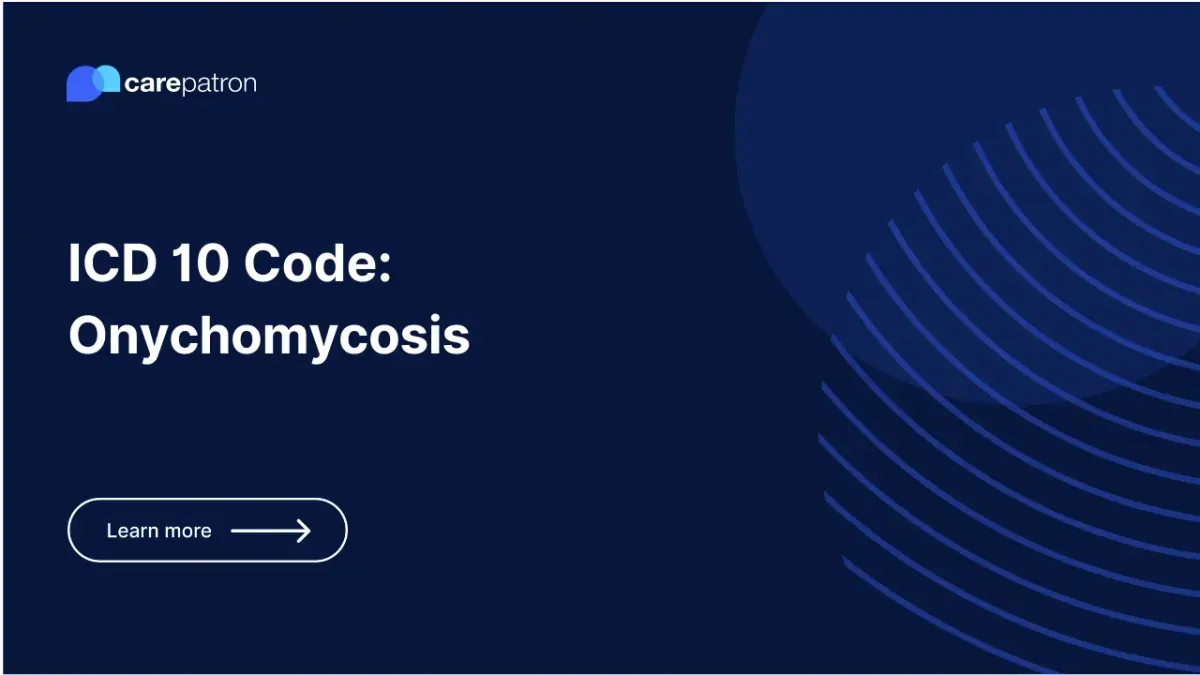
Onychomycosis ICD-10-CM Codes | 2023
Explore the updated ICD-10-CM codes for Onychomycosis for 2023, its billable codes, clinical information, related synonyms, and frequently asked questions.
Use Code
Commonly asked questions
Yes, the fungus causing onychomycosis can spread to other body areas, especially if left untreated. It's common to spread to the skin, causing conditions like athlete's foot.
The duration of treatment can vary depending on the severity of the infection. It usually takes several weeks to months of antifungal therapy for the disease to resolve completely.
Yes, recurrence is quite familiar with onychomycosis, even after successful treatment. Regular foot care and preventive measures can help reduce the chances of recurrence.
EHR and practice management software
Get started for free
*No credit card required
Free
$0/usd
Unlimited clients
Telehealth
1GB of storage
Client portal text
Automated billing and online payments
